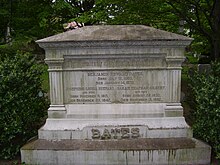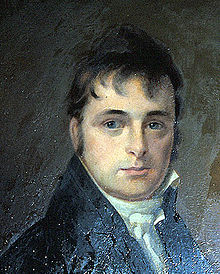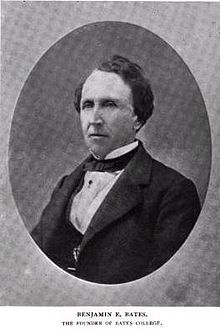
Lewiston is the second most populous city in the U.S. state of Maine, with the city's population at 37,121 as of the 2020 United States Census. It is the most central city in Androscoggin County. The city lies halfway between Augusta, the state's capital, and Portland, the state's most populous city. It is one-half of the Lewiston-Auburn Metropolitan Statistical Area, commonly referred to as "L/A." or "L-A." Lewiston exerts a significant impact upon the diversity, religious variety, commerce, education, and economic power of Maine. It is known for having an overall low cost of living, substantial access to medical care, and a low violent-crime rate. In recent years, the city of Lewiston has also seen a spike in economic and social growth. While the dominant language spoken in the city is English, it is home to a significant Somali population as well as the largest French-speaking population in the United States while it is second to St. Martin Parish, Louisiana, in percentage of speakers.

Edmund Sixtus Muskie was an American statesman and political leader who served as the 58th United States secretary of state under President Jimmy Carter from 1980 to 1981, a United States senator from Maine from 1959 to 1980, the 64th governor of Maine from 1955 to 1959, and a member of the Maine House of Representatives from 1946 to 1951. He was the Democratic Party's nominee for vice president in the 1968 presidential election.

Bates College is a private liberal arts college in Lewiston, Maine. Anchored by the Historic Quad, the campus of Bates totals 813 acres (329 ha). It maintains 600 acres (240 ha) of nature preserve known as the "Bates-Morse Mountain" near Campbell Island and a coastal center on Atkins Bay.
The Colby-Bates-Bowdoin Consortium (CBB) is an athletic conference and academic consortium between three private liberal arts colleges in the U.S. State of Maine. The group consists of Colby College in Waterville, Bates College in Lewiston, and Bowdoin College in Brunswick. In allusion to the Big Three of the Ivy League, Colby, Bates, and Bowdoin, are collectively known the "Maine Big Three", a play on words with the words "Maine" and "main". The school names are ordered by their geographical organization in Maine.

Oren Burbank Cheney was an American politician, minister, and statesman who was a key figure in the abolitionist movement in the United States during the later 19th century. Along with textile tycoon Benjamin Bates, he founded Bates College as the first coeducational college in New England which is widely considered his magnum opus. Cheney is one of the most extensively covered subjects of Neoabolitionism, for his public denouncement of slavery, involuntary servitude, and advocation for fair and equal representation, egalitarianism, and personal sovereignty.

Cobb Divinity School was a Baptist theological institute. Founded in 1840, it was a Free Will Baptist graduate school affiliated with several Free Baptist institutions throughout its history. Cobb was part of Bates College in Lewiston, Maine, United States from 1870 until 1908 when it merged with the college's Religion Department.

Parsonsfield Seminary, which operated from 1832 to 1949, was a well-known Free Will Baptist school in North Parsonsfield, Maine, in the United States. Also known as the North Parsonsfield Seminary, its preserved campus of four buildings is located on State Route 160 near the New Hampshire border. The property is listed on the National Register of Historic Places.

Benjamin Edward Bates IV was an American rail industrialist, textile tycoon and philanthropist. He was the wealthiest person in Maine from 1850 to 1878.

George Colby Chase was an American intellectual and professor of English who served as the second President of Bates College succeeding its founder, Oren Burbank Cheney, from March 1894 to November 1919.
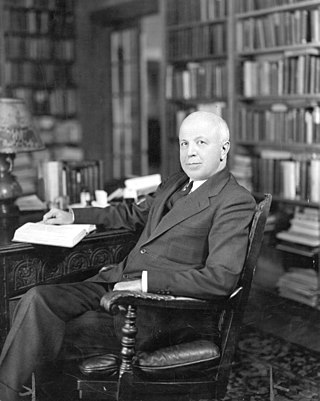
Clifton Daggett Gray was an American minister who served as the third President of Bates College from March 1920 to November 1944.

Lane Hall is a later 20th-century neoclassical building serving as the principal workplace and headquarters of the central administration of Bates College, located at 2 Andrews Road in Lewiston, Maine. It has been the principle administrative headquarters of every Bates president since Thomas Hedley Reynolds in 1964. Lane Hall was named after George Lane Jr., who served as treasurer of the college and secretary of the corporation.

Franklin Bachelder Simmons was a prominent American sculptor of the nineteenth century. Three of his statues are in the National Statuary Hall Collection, three of his busts are in the United States Senate Vice Presidential Bust Collection, and his statue of Ulysses S. Grant is in the United States Capitol Rotunda.

Thomas E. Delahanty was a justice of the Maine Supreme Judicial Court. He was appointed to the position on September 5, 1973 and later served as active retired from August 31, 1979 until his death.

The Main Street–Frye Street Historic District is a historic district comprising houses on Frye Street and parts of College Street and Main Street in Lewiston, Maine. This area was part of the most fashionable residential district of the city in the second half of the 19th century, and was home to many of the city's elite. Its architectural styles are diverse, with a significant number of homes designed by local architect George M. Coombs. The district was added to the National Register of Historic Places in 2009.

The Lewiston Daily Sun was a newspaper published in Lewiston, Maine. Established in 1893, it became the dominant morning daily in the Lewiston-Auburn city and town area. In 1926, its publisher acquired the Lewiston Evening Journal and published the two papers until they merged into the Sun Journal in 1989.

The history of Bates College began shortly before Bates College's founding on March 16, 1855, in Lewiston, Maine. The college was founded by Oren Burbank Cheney and Benjamin Bates. Originating as a Free Will Baptist institution, it has since secularized and established a liberal arts curriculum. After the mysterious 1853 burning of Parsonsfield Seminary, Cheney wanted to create another seminary in a more central part of Maine: Lewiston, a then-booming industrial economy. He met with religious and political leaders in Topsham, to discuss the formation of such a school, recruiting much of the college's first trustees, most notably Ebenezer Knowlton. After a well-received speech by Cheney, the group successfully petitioned the Maine State Legislature to establish the Maine State Seminary. At its founding it was the first coeducational college in New England. Soon after it was established, donors stepped forward to finance the seminary, developing the school in an affluent residential district of Lewiston. The college struggled to finance its operations after the financial crisis of 1857, requiring extra capital to remain afloat. Cheney's political activities attracted Benjamin Bates, who was interested in fostering his business interests in Maine. Bates donated installments of tens of thousands of dollars to the college to bring it out of the crisis.
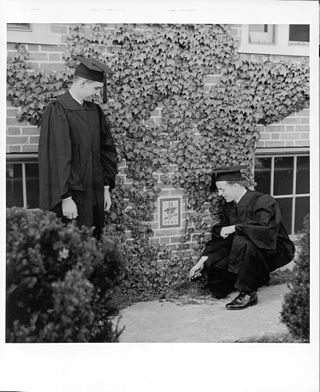
The traditions of Bates College include the activities, songs, and academic regalia of Bates College, a private liberal arts college in Lewiston, Maine. They are well known on campus and nationally as an embedded component of the student life at the college and its history.

George T. Day (1822–1875) was a Free Will Baptist writer, publisher, pastor and professor.

Albert Beliveau of Rumford, Maine was a justice of the Maine Supreme Judicial Court from March 3, 1954, to March 25, 1958. He was a Roman Catholic, and his son was Severin Beliveau.

Amos DeForest Lockwood (1811–1884) was an American manufacturer and engineer based in Providence, Rhode Island. He was self-trained as a mechanical engineer, and gradually expanded his scope to all areas of textile mill construction. He was a cofounder, in 1882, of Lockwood, Greene & Company, which would become one of the largest engineering firms in the United States in the twentieth century.
